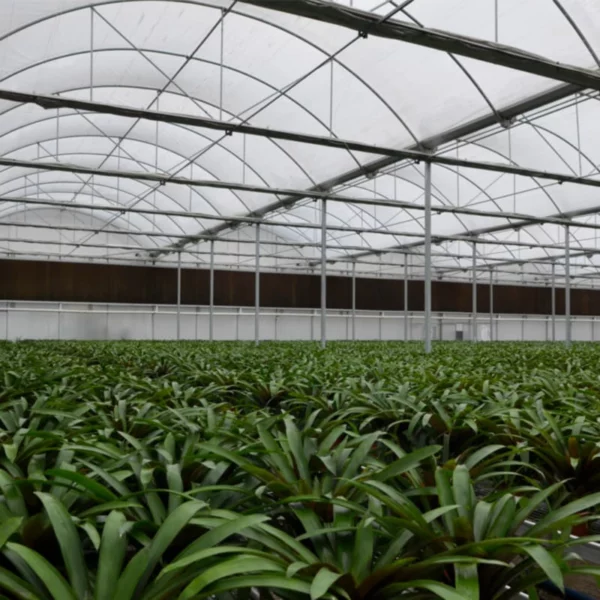When considering plants suitable for growing in a greenhouse for eventual outdoor planting, it’s important to select species that can acclimate to the outdoor environment successfully.
Here are some examples of plants that are commonly grown in greenhouses and can later be transplanted outdoors:
- Vegetable Seedlings: Greenhouses are often used to start vegetable seedlings before transplanting them outdoors. Popular choices include tomatoes, peppers, cucumbers, lettuce, kale, cabbage, and herbs like basil, parsley, and cilantro.
- Annual Flowers: Annual flowers are well-suited for greenhouse cultivation and subsequent outdoor planting. Some common annuals grown in greenhouses include marigolds, petunias, zinnias, impatiens, snapdragons, and cosmos.
- Perennial Flowers: Perennial flowers can also be started in greenhouses and then planted outdoors once they are well-established. Examples of perennial flowers suitable for greenhouse cultivation include daylilies, coneflowers, black-eyed Susans, asters, coreopsis, and salvias.
- Herbs: Various herbs can be grown in greenhouses for later transplanting outdoors. Popular choices include rosemary, thyme, oregano, sage, mint, and lavender.
- Berry Bushes: Certain berry bushes can be started in greenhouses and then transplanted outdoors. Examples include blueberries, raspberries, blackberries, and strawberries.
- Tree Seedlings: Greenhouses are commonly used for germinating and nurturing young tree seedlings before they are planted outdoors. This can include species like maple, oak, pine, or fruit trees such as apple, cherry, or peach.
When selecting plants for greenhouse cultivation with the intention of moving them outdoors, consider the climate, soil conditions, and sunlight requirements of your local area. Additionally, be mindful of the appropriate timing for transplanting each specific plant type, greenhouse for outdoor as it may vary depending on the region and climate zone. Consult local gardening resources or extension services for specific recommendations tailored to your area.
Are there any specific care requirements or techniques for successfully transitioning greenhouse-grown plants to the outdoor environment?
Transitioning greenhouse-grown plants to the outdoor environment requires some care and attention to ensure their successful adaptation.
Here are some specific care requirements and techniques to consider for a smooth transition:
- Harden Off the Plants: Harden off your greenhouse-grown plants gradually before transplanting them outdoors. This process involves exposing the plants to outdoor conditions gradually over a period of several days to help them adjust to factors like wind, temperature fluctuations, and increased sunlight. Start by placing them in a sheltered outdoor location for a few hours each day, gradually increasing the time and exposure until they can withstand full outdoor conditions.
- Timing and Weather Considerations: Choose an appropriate time to transplant your plants based on your local weather conditions and the specific requirements of each plant species. Avoid transplanting during periods of extreme heat, cold snaps, or heavy rainfall. Aim for a time when the weather is mild, and the plants have had a chance to grow and develop enough strength in the greenhouse.
- Gradual Sun Exposure: Greenhouse-grown plants are accustomed to controlled lighting conditions, so direct sunlight can be intense for them initially. Gradually expose the plants to increasing amounts of sunlight over a few days before transplanting them. This can be done by initially placing them in a shaded or partially shaded area, gradually moving them to receive more direct sunlight.
- Soil Preparation: Prepare the soil in the outdoor planting area before transplanting. Ensure it is well-draining and rich in organic matter. Remove any weeds, rocks, or debris that may hinder the plant’s establishment.
- Watering: Pay close attention to watering practices during the transition period. Greenhouse environments typically have controlled irrigation systems, so plants may require extra water after being planted outdoors. Monitor soil moisture levels and provide sufficient water as needed, considering the weather conditions and the specific water requirements of each plant species.
- Protection from Pests and Wildlife: When transitioning plants outdoors, they may be more vulnerable to pests, insects, and wildlife. Monitor for signs of pest activity and take appropriate measures to protect the plants, such as applying organic pest control methods or using physical barriers like netting or fencing.
- Provide Support: Some plants may require stakingor additional support when transplanted outdoors. Evaluate the growth habits of the plants and provide support structures such as stakes, trellises, or cages as needed to prevent them from bending or breaking in outdoor conditions.
- Mulching: Apply a layer of organic mulch around the base of the transplanted plants to help conserve moisture, suppress weed growth, and regulate soil temperature.
- Monitor and Adjust: Keep a close eye on your transplanted plants during the initial weeks after transitioning. Watch for any signs of stress, nutrient deficiencies, or pest problems. Make necessary adjustments to watering, fertilization, or pest control methods as needed.
By following these care requirements and techniques, you can help ensure a successful transition for your greenhouse-grown plants to the outdoor environment. Remember that each plant species may have specific needs, so it’s essential to research and understand the requirements of the particular plants you are transitioning.
